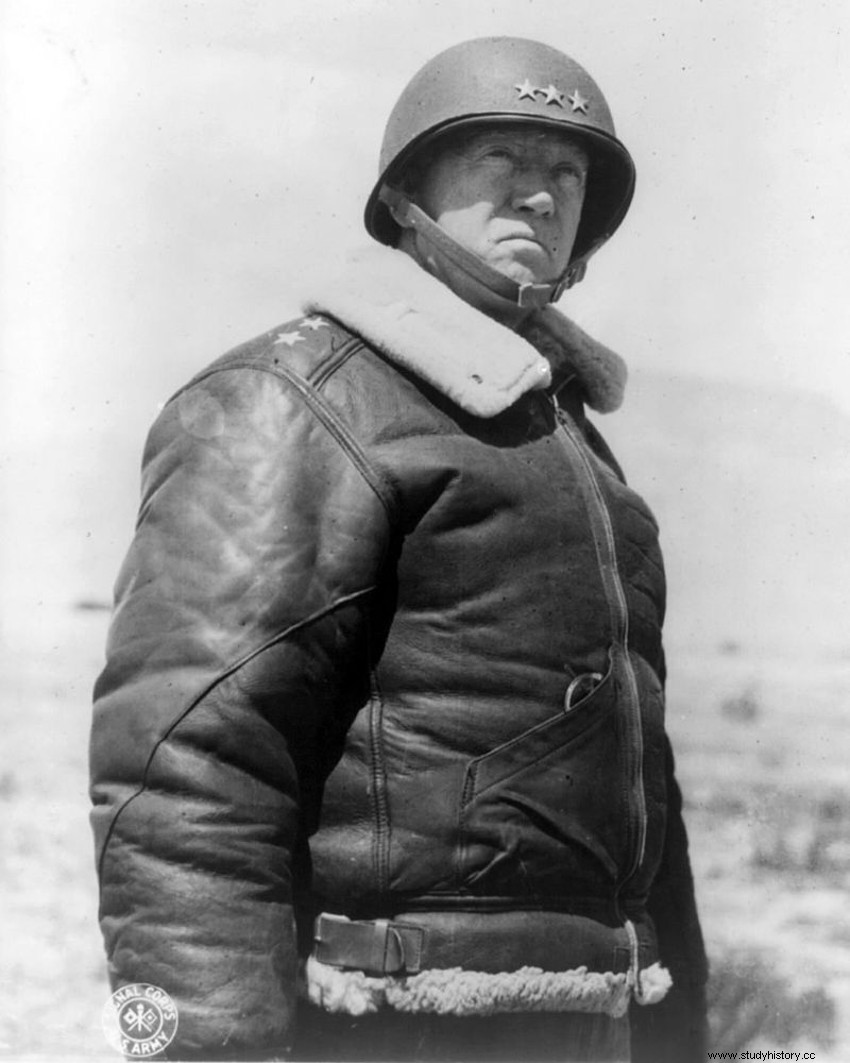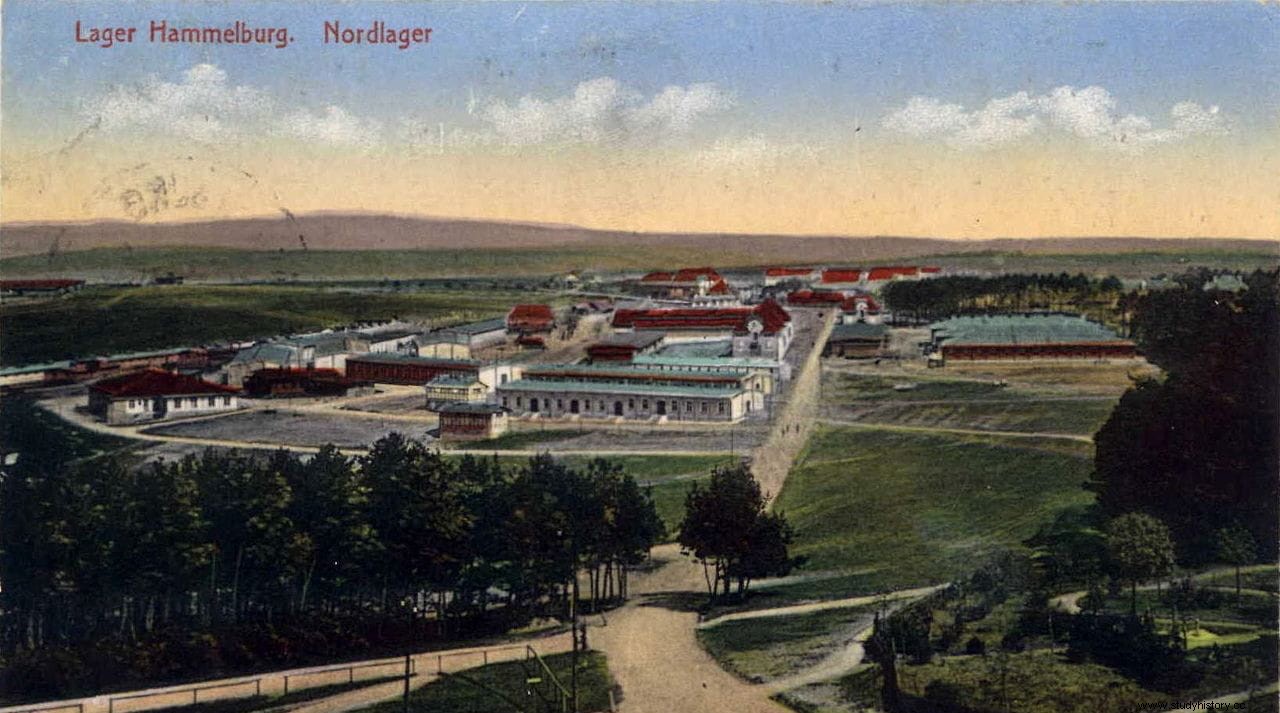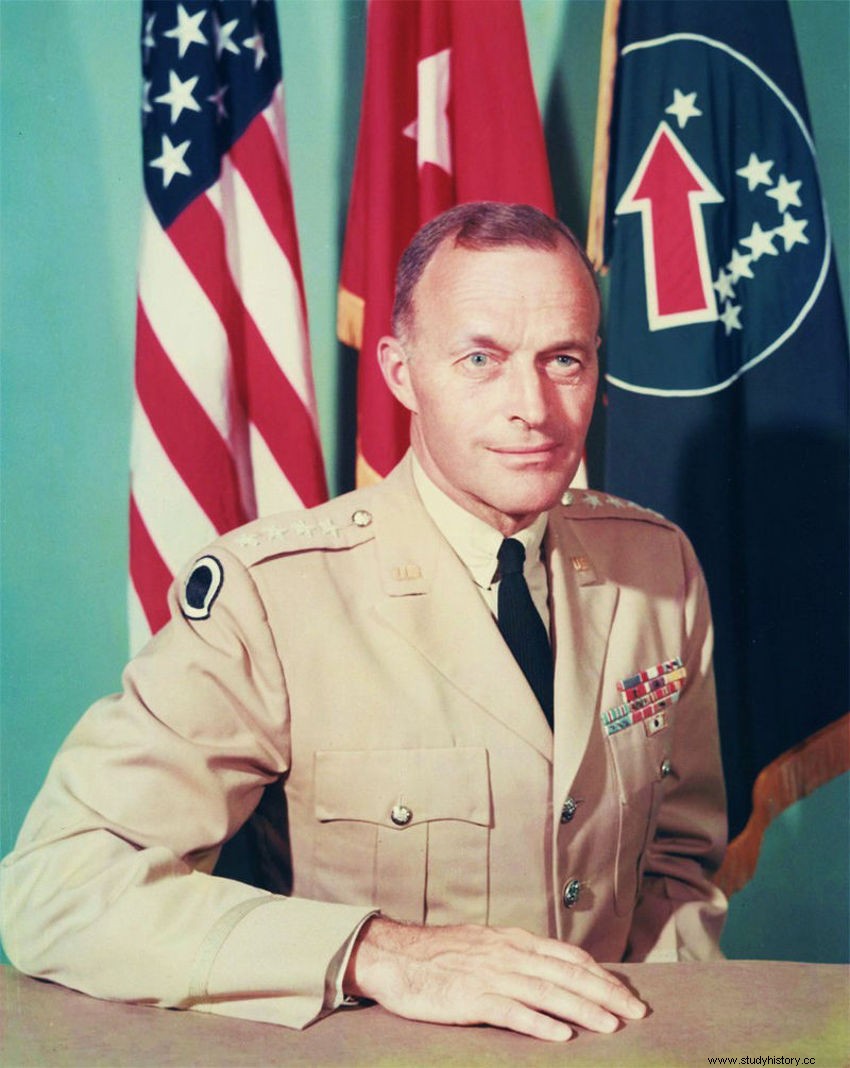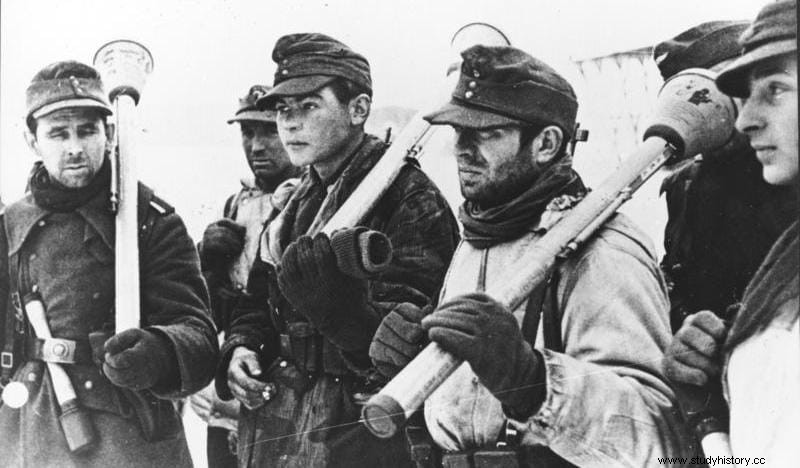Normally, when a war is long enough, a multitude of actions of all kinds are recorded:large-scale campaigns, large and small battles, ambushes, rapid commando interventions... Sometimes very imaginative operations are attempted that, if successful, praise their opponents. author and make him a tactical genius. The bad thing is when they go wrong and then the criticism and the responsibility for the casualties fall on him. That is what happened to the famous General Patton in the spring of 1944, when the mission sent to liberate a concentration camp ended in resounding defeat, which, moreover, was unnecessary because the place fell into Allied hands just nine days later.
George Patton had been appointed Major General in April 1941. In 1943 he replaced Lloyd Fredendall and rose again to Lieutenant General, receiving command of US forces in North Africa. His success earned him command of the Seventh Army with which he had to invade the western half of Sicily while Montgomery dealt with the eastern half, although the rivalry with the British - which had already come from the African campaign - led him to hasten his actions.
He was one of those strokes that characterized him, sometimes for the better (he was effective and his charisma excited his men) and sometimes for the worse (the controversial Biscari massacre, the slap to a soldier with combat stress ). In fact, his friend Omar Bradley had to bail him out in the face of the dismissal demands that were numerous due to the incidents that caused his peculiar personality.

However, in the summer of 1944, with the Allies already advancing through France, he was entrusted with the Third Army, with which he gained almost a thousand kilometers in just a couple of weeks. After the failure of the German counteroffensive in the Ardennes, in which Patton played a decisive role, the map of operations was already in German territory and it was then that the strange episode of the concentration camp took place.
It was between March 26 and 29, 1945. Patton commissioned Lieutenant Colonel Creighton Abrams, his most capable and aggressive armor commander, to form a combat group for a special mission. Abrams offered him all of Combat Command B of the Fourth Division that he commanded and that was made up of two battalions with supporting artillery, but the general considered it excessive and in the end a group was formed with an infantry company and two tank companies, adding a total of three hundred and three men, eleven officers , sixteen main battle tanks (ten Sherman and six other light ones) and other auxiliary vehicles (half-tracks, self-propelled vehicles, jeeps, an ambulance...).
Since the commander of the armor was on leave, Abrams suggested young Captain Abraham Baum, a New York Jew born in the Bronx in 1921, for the command. A veteran of the Normandy landings, where he had been wounded by stepping on a mine, he himself would tell that when he was ordered to report to Patton and Patton explained the objective of the mission, he couldn't help but wonder "what the hell am I doing here?" Thus, the force under his command was named Task Force Baum .
The question the officer asked himself was not gratuitous; Indeed, his task was truly unique, as he had to go more than eighty kilometers into enemy territory to locate a camp where thousands of American prisoners were being guarded and return with them in anticipation that the Germans decided to kill them in the face of the Allied advance. Here comes the time to make a point and explain the situation.
The camp in question was called Camp Hammelburg (by the neighboring city, located three kilometers away) and in the First World War it had been used as a military training area, being converted to house prisoners in the Second. It was actually made up of two subcamps, the Stalag XIII-C and the Oflag XIII-B , the first for soldiers and the second for officers, the latter being the target of the Task Force Baum .
Why? Patton would later explain that he feared for their lives, because although the Germans were not used to killing prisoners, there had been a case (the most recent being that of Malmedy, in the Ardennes, where eighty-four US captives were machine-gunned and finished off). in cold blood by theKampfgruppe Peiper of the 1st SS Panzer Division). However, another more controversial version circulated about the general's true motives for organizing that mission:he wanted to save his son-in-law, the husband of his daughter Beatrice.

His name was John Knight Waters and he was a lieutenant colonel. He had been captured in Tunisia the year before and initially sent to Oflag 64 from Schubin, Poland. But in January 1945, faced with the unstoppable advance of the Red Army, he transferred all the prisoners (that is, because most had to walk the more than five hundred kilometers) to the Oflag XIII-B from Camp Hammelburg , until then intended exclusively for Serbian officers. With the arrival of the new interns, the Serbs concentrated on one side and the Americans on the other, leaving the place saturated.
And it is that five thousand soldiers met there, of which fourteen hundred were from the United States, according to the record made by the highest ranking command, Colonel Paul Goode. With such congestion and given the progress of the war, the prisoners were not exactly in good condition (but neither were their guards):they had to be distributed in seven buildings with five rooms, each of them housing rooms in which forty people were crammed.
At least the human warmth perhaps served to face that terrible winter in which temperatures fell below seven degrees below zero, since it barely received coal every three days and it was necessary to look for firewood in the surroundings. The food was not good either and the initial diet received by the prisoners, estimated at about one thousand seven hundred calories, was reduced little by little due to supply difficulties and the increase in the prison population until it was left at just over a thousand calories. This caused serious health problems, aggravated by poor hygienic conditions, which resulted in an epidemic of dysentery.
Let us now return to the story of the Task Force Baum . It went live on the night of March 16 with obvious shortcomings, with only a handful of maps of the region to go around and the exact location of Camp Hammelburg unknown. . As a German observation plane also discovered the column, it was necessary to incorporate anti-aircraft material on the fly and there was a confrontation in which a Sherman was lost. . Even so, at sunset the next day they sighted the concentration camp.
The ensuing battle was short-lived, little more than token resistance, as the Guardians lacked the equipment to engage the tanks and most chose to flee. Even so, the Americans continued to fire on the field until they realized a tremendous mistake:those soldiers in gray uniform were not Germans but Serbian prisoners. It was not the only nonsense that was going to be committed, as we will see.

Gunther von Goeckel, commander of the camp, thought that a whole division was coming at him and preferred to agree, asking Patton's son-in-law to go out and explain to the attackers the pickle that his men were making among the Serbs. Waters accepted but had not gone even a fraction of the way when a Teutonic soldier, who had perhaps not been informed, interpreted this as an escape attempt and shot him, hitting him in the buttock. Waters had to be returned to the field to have his wound treated. Shortly after the Task Force Baum entered the compound and what should have been a moment of happiness for the captain upon reaching the first part of his objective turned into an unpleasant surprise.
And it is that Baum had been told that in the Oflag XIII-B there were three hundred officers and, instead, there were almost five times as many. An impossible number to carry in their insufficient vehicles and with the aggravating circumstance that they could not go on foot either due to their unfortunate physical condition. So he decided that he would rescue only those with the highest rank -about two hundred- and he would give the rest the freedom to choose:try to keep walking, stay or try an escape on his own; some opted for the latter option and would be recaptured but most decided to remain there, Waters among them due to his injury.
The Task Force started back at nightfall and again problems arose. Since there was no moon and they could not turn on headlights to avoid revealing their presence to the enemy, they had no choice but to send a reconnaissance jeep ahead to open the way; when danger was detected, everyone turned off the engines and a rigorous silence was maintained. But it was very difficult to cross eighty kilometers through the opposite terrain without running into German patrols.
In fact, they ambushed them. It was on its way through Hölrich, where veterans of the German Infantry Combat School (where a hundred non-commissioned officers did their training to be promoted to officers) cleverly deceived them by speaking on the radio in English and luring the tanks towards troops armed with panzerfaust (personal tank destroyers, similar to bazookas Americans). With that ruse they managed to destroy four Sherman .
Baum managed to get his people out of the mousetrap and regroup on a hill, already at dawn. But the night wandering and the battle had used up a lot of fuel and there was not enough left to reach his lines, so he decided to make the road in broad daylight and in a hurry to cut it short. Of course, the released prisoners couldn't keep up, so he advised them to return to the camp, which they did led by Colonel Goode waving a white flag.
But when the Task Force she resumed her march a rain of fire fell on her; the Germans had surrounded them during the night, further reinforced by half a dozen Tiger tanks. . Knowing he had no choice, Baum lunged at them desperately and his spine was practically pulverized. Baum managed to break through accompanied by two soldiers and several ex-prisoners, but the rest fell on the spot and the survivors scattered through the forest, where they were caught one after another.

The casualty count was staggering:only thirty-five men made it back, leaving thirty-two dead and the rest captured (two hundred and forty-seven!). Fifty-seven vehicles were also lost, including tanks, jeeps and others. Baum himself was injured and, paradoxically, ended up at Camp Hammelburg . Ironies of fate, the place was liberated by the 14th Armored Division nine days later.
Irony upon irony, Patton was able to recover his son-in-law since, being convalescing from his wound, he was not transferred by train to Nuremberg like the rest of the prisoners. Perhaps that is why he decorated Baum with the Distinguished Service Cross, a medal that did not require a previous investigation that would have been, without a doubt, very uncomfortable for him. Because even though he always denied knowing in advance that Waters was a prisoner at Camp Hammerburg , almost everyone assumed that he was aware, to the point of having included in the Task Force to Major Alexander Stiller -who knew him- to identify him among the others.
In any case, he did admit to an irate Eisenhower the mistake of that failed expedition, which was due, he said, to not having sent a large enough force. By the way, his son-in-law became a general and had a meritorious military career; he died in 1989. As for Abraham Baum, he was extraordinarily long-lived:he lived to be ninety-one years old, dying on March 2, 2013.
